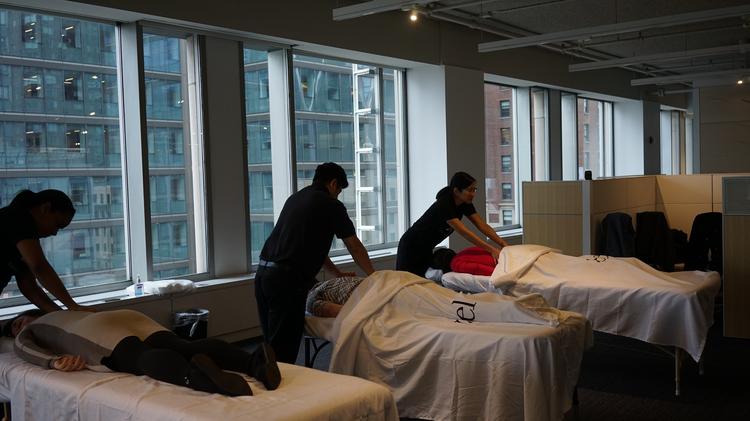
Companies should give their workplace wellness programs an overhaul, finds a new report from the Global Wellness Institute which says “unwellness” at work costs the U.S. economy $2.2 trillion annually.
Here’s how the wellness think tank, based in Miami, came up with that figure: Disengaged workers cost businesses $550 billion in lost productivity, while workers with chronic disease cost companies $1.1 billion. The rest of the tab stems from $250 billion in work-related injuries and illnesses, and $300 billion in work-related stress.
“A lot of us face wellness challenges where we work, and it’s not getting any better,” said Ophelia Yeung, a senior research fellow for Miami-based Global Wellness Institute who spoke at a luncheon Wednesday at the Manhattan offices of Steelcase, the office furniture and design firm, where the 2016 annual report was released.
While wellness programs are more common in North America as compared to elsewhere around the world (52 percent of companies on this continent have one), most employees surveyed as part of the study don’t think they work, and some are suspicious that wellness is a way for companies to squeeze more productivity out of them. Millennials say that such programs make zero difference, while a big problem across various age ranges is the perception that companies don’t care much about how their workers are doing physically, spiritually, and mentally.
“Many people think ‘My company doesn’t care if I’m well or not,’” said another Global Wellness Institute researcher Katherine Johnston.
So what will workplace wellness, a $40 billion part of the global wellness economy, look like in the future? Some companies are setting up nap and meditation rooms to help employees perk up during the day, Johnston said.
“Not every workplace needs ping-pong tables and videogames,” she said.
One entrepreneur at the luncheon was Zeel founder Samer Hamadeh who said his massage-on-demand app is now being used not just by individuals but by companies such as Pfizer and Zappos.
“Sitting at our desks makes us really unhealthy,” Hamadeh said, adding that even a 10 or 15-minute massage that take place in an office with clothes on can help staff de-stress and get the blood circulating. His company, based in New York, offers quarterly and monthly packages to companies who want to add it as part of their wellness programs.
Those few minutes of massage are just a fraction of the workweek for salaried workers, according to a companion white paper from Everyday Health commissioned by Global Wellness Institute. That paper found that most salaried workers work 46 hours a week on average, and some work a full 1.5 extra days per week.
“Only one in three workers feels their company cares for them,” said Denise Esakoff, vice president of global market research at Everyday Health, said. Those that do feel as if their companies care about them are markedly more likely to enjoy their work with 66 percent of those who worked for companies they felt “cared,” reporting that they find their work to be interesting.
For those at “non-caring” companies, 84 percent said their mental health was affected, 75 percent said their happiness was affected, 68 percent cited physical health issues and 52 percent said their family life was affected.
“We all want to come to work in a place that we feel good about,” Esakoff said.
Millennials, in particular, value healthy food, the ability to set their own career paths, and praise for a job well done (even over monetary awards), the research found.
Tangible wellness benefits can include subsidized gym memberships, options to telecommute, stress reduction programs, privacy space and on-site recreation. Intangible benefits can simply be encouraging people to forge friendships at work and having a manager that sets a positive tone and “reasonable expectations,” versus expecting people to answer emails around the clock.
“People are yearning for positive role models,” Johnston said.
Yeung says one of the predictions of the study is that wellness at work will gain momentum within the next five years. adding that workers of the future will seek out the healthiest workplaces to improve their own wellness, and such companies will have a competitive advantage in attracting better workers. The government could begin to set regulations for the workplace involving wellness as they do for worker safety.
“Lost productivity and engagement will be too hard to ignore,” she said.
